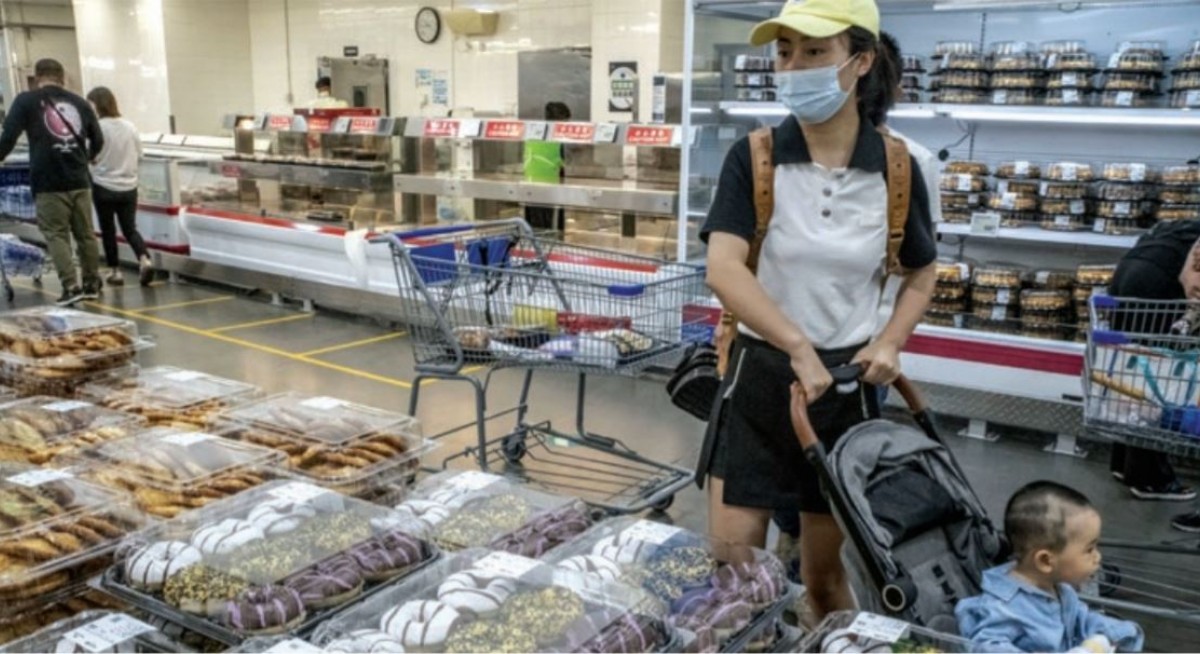In its recent Regional Economic Outlook (REO), the International Monetary Fund (IMF) notes that the pandemic has taken a turn for the worse in Asia since the spring, along with the region’s growth outlook. The growth projection for the Asia and Pacific region is downgraded by more than 1% to 6.5% compared to the April forecasts — more than for any other region.
The downgrade is mostly due to the fast spread of the delta variant amid initially low vaccination rates, which has tragically led to further devastating loss of lives, especially in the densely populated South and Southeast Asia.
Although demand for Asian manufacturing and exports from Europe and the US has supported recoveries, real GDP outcomes in the first half of 2021 have disappointed. Manufacturing held up because of surging demand for pandemic-related supplies, but contact-intensive sectors such as services and retail sales are taking longer to recover.
Despite the downward revision, Asia Pacific remains the fastest growing region in the world. But the divergence between Asian advanced economies and emerging and developing economies is deepening.
High-tech (for example, China, South Korea) or commodity exporters (like Australia and New Zealand) can take full advantage of favourable external demand and accommodative financial conditions.
By contrast, tourism-dependent economies — such as the Pacific island nations and Thailand — as well as economies with limited room for fiscal stimulus (mostly low-income countries), have been lagging.
As vaccination rates accelerate, the region is expected to grow by 4.9% in 2022, 0.4 percentage point faster than projected in April. However, output levels in emerging and developing economies are expected to remain below pre-pandemic trends in the coming years.
Accelerating inflation remains a concern for the global economy, though price increases in Asia are more subdued than in other regions. Higher commodity prices, supply chain bottlenecks and rising shipping costs have impacted exports more than domestic production. Thus, domestic consumer price increases have been contained.
As a result, monetary policies in the region have not tightened as much as in the rest of the world. New Zealand was the first advanced economy to taper asset purchases, South Korea the first to raise policy interest rates (mainly due to financial stability considerations), and Singapore also recently moved ahead to tighten monetary policy. At the same time, emerging Asia has maintained an accommodative monetary policy to foster the recovery, unlike other emerging markets.
There are downside risks to the region’s economic outlook. On the health front, the uncertain path of the pandemic and weakening vaccine efficacy against virus variants is a risk.
On the economic side, global supply disruptions and potential financial spillovers from the Federal Reserve scaling back its support for the US economy is a concern for the region.
Higher financing costs can interact with domestic financial vulnerabilities (rising leverage in the corporate and housing sectors in some countries) and slow the recovery further. Natural disasters also pose a growing threat to low-income countries, especially the Pacific island countries.
Given these challenges, our latest assessment calls for policymakers to carefully navigate the uncertainties and adjust their policy responses accordingly. Their first priority should be to address the health crisis. Swift and broad vaccinations and equitable sharing of vaccines globally are critical.
In addition, macroeconomic policy support should remain in place where possible with improved targeting of support for the most vulnerable people and sectors, until the recovery is more firmly established, and the pandemic is under control.
We also advise that fiscal policies should be undertaken within medium-term frameworks to maintain credibility and keep borrowing costs low, while central banks should be prepared to act quickly if the recovery strengthens faster than expected or where there is a tangible risk of rising inflation expectations.
Structural reforms and investments to develop new growth engines, including in the digital, education, and green sectors, would help raise productivity and ensure more equitable outcomes for students and workers dealt setbacks by the pandemic’s upending of their learning and lives.
To explore the policies to foster a strong and durable recovery, this REO presents two studies. The first study provides new empirical evidence on the health and economic benefits of swift vaccinations. The analysis quantifies how these inoculations can spill over across borders, demonstrating that no single nation can fully recover until all countries enjoy broad access.
The second study highlights how trade — a historically powerful driver of growth in Asia — has stalled, in part due to waning liberalisation amid still high trade restrictions. The analysis underscores how reducing non-tariff barriers — which are significantly higher in Asia than in other regions — can help to accelerate inclusive prosperity. This would also build on the past progress achieved through regional agreements, such as the Comprehensive and Progressive Agreement for Trans-Pacific Partnership and the Regional Comprehensive Economic Partnership.
Against this backdrop, we are pleased to see that Singapore is on track for a solid recovery in 2021, as evidenced by the strong advance estimate of 3Q GDP growth released last week. This is a testament to Singapore’s success in confronting the pandemic.
Indeed, with one of the highest vaccination rates globally, the country is well-positioned to continue a gradual removal of restrictions and facilitate a broad-based recovery. The authorities have appropriately deployed targeted fiscal measures, which are well suited to reach firms and households impacted by the pandemic, particularly in domestic-oriented sectors.
For more stories about where the money flows, click here for our Capital section
For instance, to mitigate the economic impact of recent rises in infections, the government announced additional targeted measures to support impacted workers, businesses and individuals, including one-off payouts and temporary assistance such as wage subsidies under existing schemes.
Looking ahead, Singapore has ample fiscal space to continue policy support as needed to cushion the economic impact of any surges in Covid-19 infections.
Changyong Rhee is director, Asia and Pacific department at the International Monetary Fund
Photo: Bloomberg




